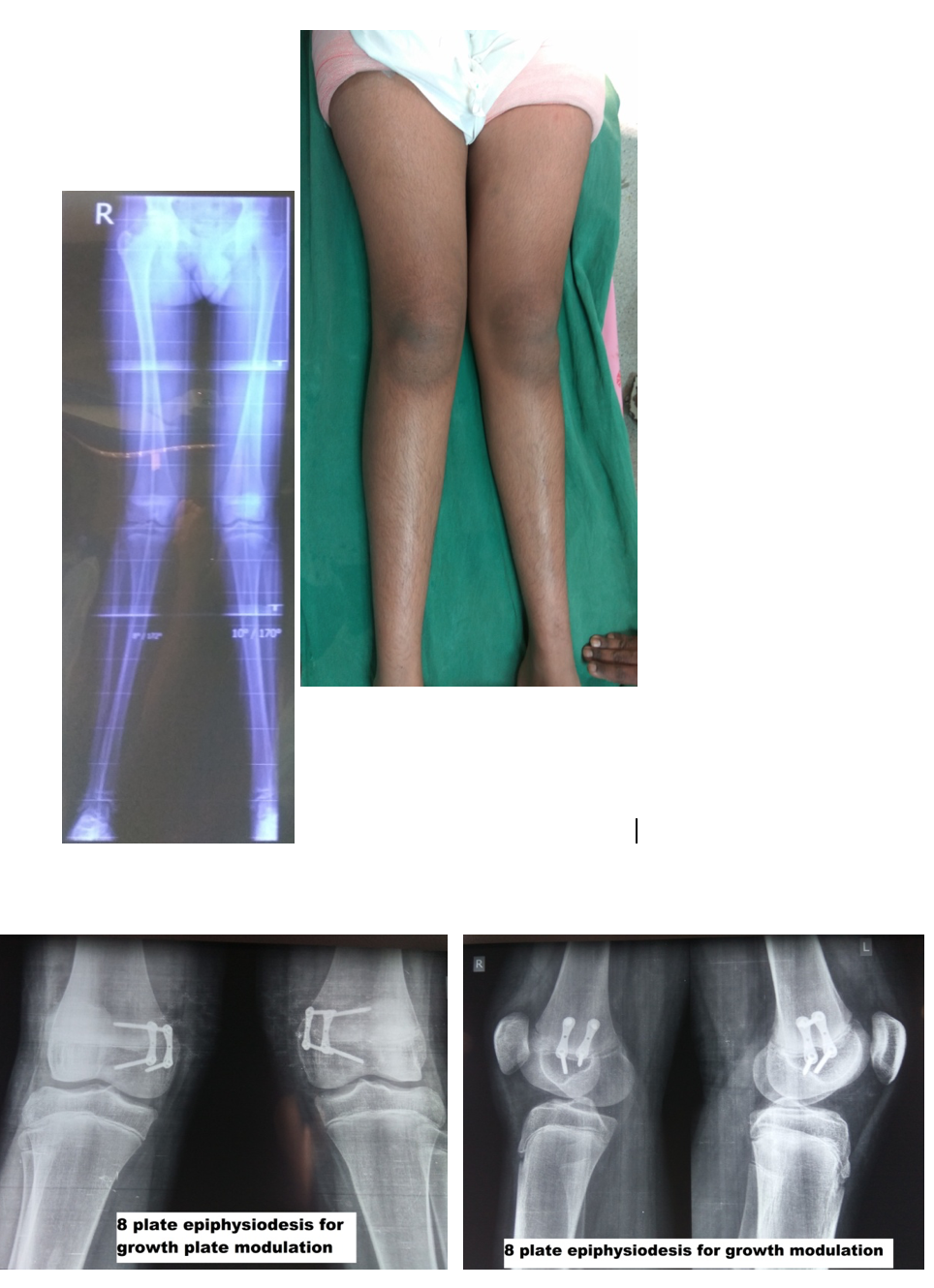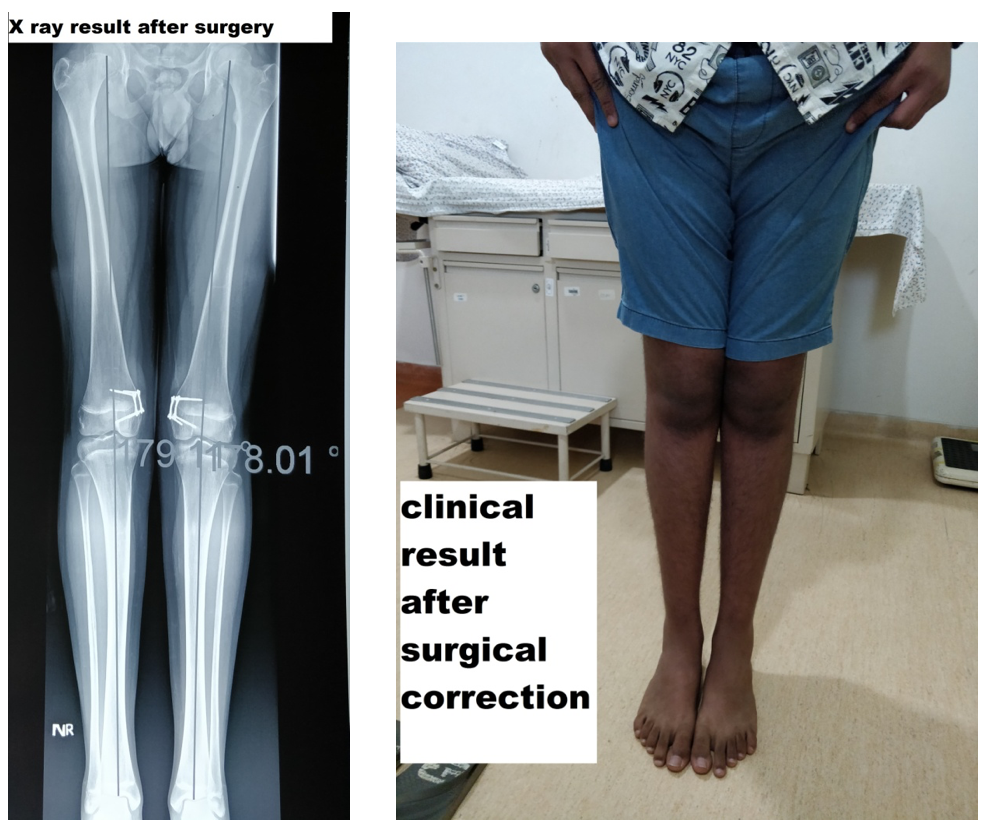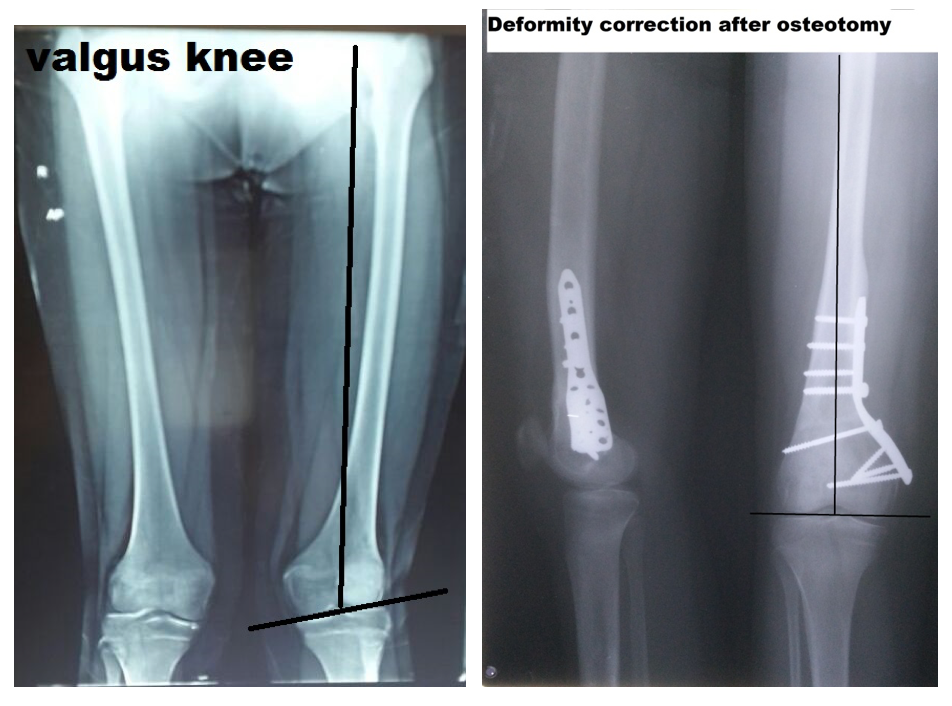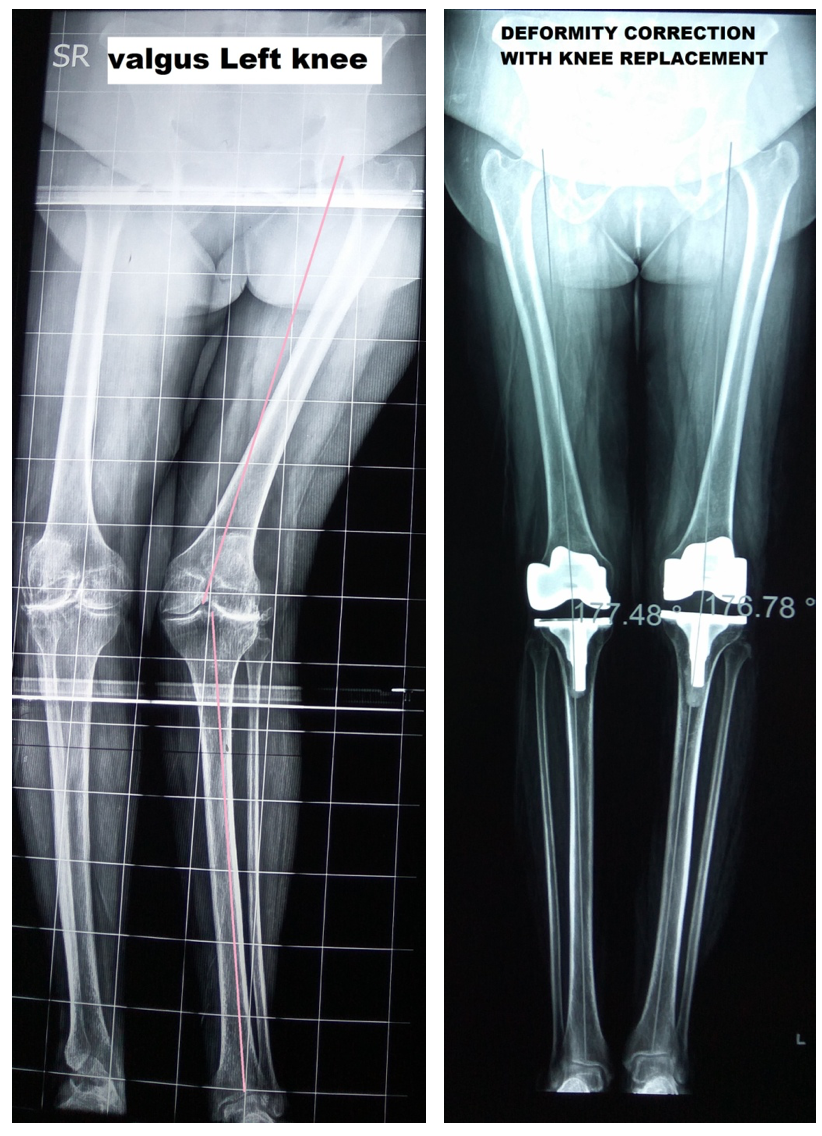Book Appointment
Fillup the form to make an appointment with the doctor
Conditions KNOCK KNEES
Genu valgus is a deformity where there is angular abnormality at the knee with concavity outside. The knees knock with each other with the feet planted wide apart. Knock knees could be part of the normal growing process or could be abnormal. The big challenge is to identify where the normalcy ends and which of them are abnormal that needs treatment.
As a child grows, the knees drift from bowlegs to knock knees from the age of 18 months to 36 months. There is a physiological Valgus of up to 20 degrees at this age. Anything more than 20 degrees is considered abnormal at this age, and finally, it settles down to a slight 3-7 degree valgus at the age of 7 years.
If it is in both knees, it could be because of Rickets (nutritional deficiency or because of a kidney cause); genetic causes, if it is in only one leg, it could be because of trauma or a tumor.
Clinical assessment– If a child has physiological knock knees it tends to improve after the age of 4 years and the intermalleolar distance should not be more than 8 cm
Radiological- X-ray should have valgus usually less than 20 degrees at a younger age and less than 12 degrees at seven years
Bracing- Braces have not demonstrated any advantage in Knock knee treatment
Before Skeletal Maturity-
Knock knees can be treated by “GROWTH MODULATION RECONSTRUCTIVE SURGERY.” Putting temporary checks on the growth plate to correct the angular alignment to acceptable alignment by using clips, staples, or growth modulation plates and then removing the provisional arrest leads to the correction of the deformity.


If there is little growth left in childhood and an individual develops deformity, then it can be treated with “REALIGNMENT OSTEOTOMY.” Principles of deformity correction are applied to the bone where the deformity is present. The apex of deformity is identified, an osteotomy is done so that the knee usually aligns and does not lead to long term problems like arthritis.

If an individual has both deformity and arthritis, then, unfortunately, the only treatment option is to perform a “JOINT REPLACEMENT SURGERY” where both the deformity as a well as arthritis can be managed in the same surgery.
